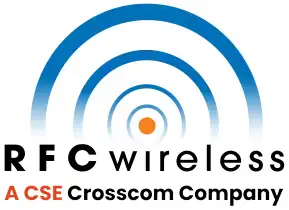MOTOTRBO Single Site Conventional Radio Systems
Baseline Capacity and Coverage
A repeater brings many benefits to your workplace communications. With high transmitter power and a sensitive receiver, your coverage area is significantly boosted. The digital error correction capability within the unit also improves voice quality. And with the MOTOTRBO repeater IP interface, you can more efficiently implement operations-critical applications such as Work Order Ticketing, GPS Dispatch Consoles and Telephone Interconnect. MOTOTRBO repeaters use both TDMA timeslots of a DMR standard radio channel. Depending on user activity, this can support up to 200 radio users.
Conventional mode uses a high-power repeater and a pair of channels to give you good radio coverage and capacity across a wide area.
Features and Benefits
Analog radio works well, and proves itself every day in countless deployments around the world. However, analog two-way radio has reached the limits of innovations. Virtually everything that can be imagined using analog radio has already been attempted or achieved over more than a half-century of experimentation and innovation. Today, a new platform is required to break through to new levels of performance and productivity.
Modulating the voice into digital signals, rather than analog, provides several advantages. First and foremost, digital technology provides better noise rejection and preserves voice quality over a greater range than analog. Especially at the farthest edges of the transmission range, users can hear what’s being said much more clearly – increasing the effective range of the radio solution and keeping users responsive to changing situations in the field.
Depending on the technologies used, digital systems can also be designed to:
- Make more efficient use of available, licensed RF spectrum.
- Combine voice and data access in the same device, delivering more information while empowering field workers with systems that are more portable, flexible, and much easier to use than two different and incompatible systems.
- Enable integration and interoperability with back-end data systems and external systems.
- Combine analog and digital voice in the same device, easing the migration to digital while preserving investments in analog technology.
- Provide strong, practical, easy-to-use privacy solutions without the significant loss in voice quality that analog scrambling can cause.
- Enable flexible and reliable call control and signaling capabilities.
- Flexibly adapt to changing business needs and new applications through a modular architecture.
Many enterprises are finding they need more than the fundamentals that analog two-way radio delivers. Perhaps their licensed channels are becoming crowded and they need more capacity. Perhaps they need more flexible ways to communicate with users both inside and outside the work team. Perhaps they need access to data in combination with voice to improve responsiveness and productivity. Digital radio provides a powerful, flexible platform that professional organizations can adapt to meet these needs and more.
By migrating from analog to digital two-way radio communications, these organizations can fill many of these needs immediately and build a strong technical foundation for adding new functionality to meet new needs in the future.
The clear advantages of digital radio – along with increasing regulatory pressures to use RF spectrum more efficiently – will drive widespread adoption of professional two-way digital radio solutions in the coming years. If you’re using analog today, you’ll almost certainly be migrating to digital tomorrow. Now is the time to research the available technologies so that, when you’re ready to make the move, you’ll choose systems that provide the greatest benefit over the long term.




